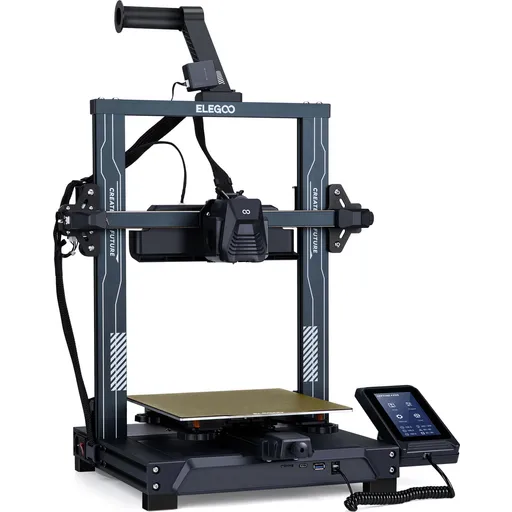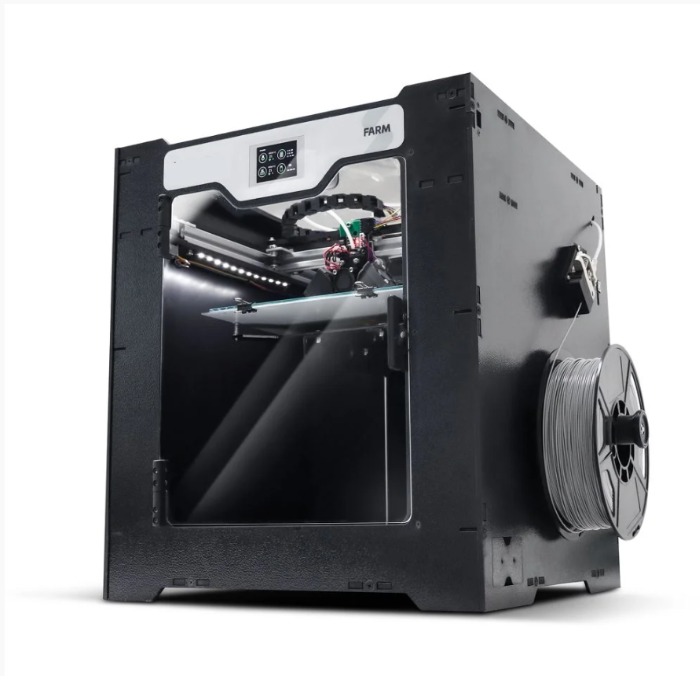Compare Neptune 4 PRO vs FARM
Comparison between the best 3D printers
Choose the best 3D printer at the best price. The cheapest 3D printers are here.
Buy a 3D printer here with 3D Fila.
 |
 |
|
| Model | Neptune 4 PRO |
FARM |
| Printing Material | Filament | Filament |
| Buy Filament for Elegoo Neptune 4 PRO | Buy Filament forSethi 3D FARM | |
| Estimated price | $359,00 | $1127,00 |
| Manufacturer | Elegoo | Sethi 3D |
| Release Year | 2023 | 2021 |
| Print Volume [mm] | 225x225x265 | 240x240x240 |
| Printer Size [mm] | 475x445x515 | 550x42x500 |
| Weight [kg] | 8,9 | 15,7 |
| Power Loss Recovery | YES | YES |
| Enclosed printer | NO | YES |
| Bed Leveling | Automatic | Automatic |
| Filament End Sensor | YES | YES |
| Bed type | Heated | Heated |
| Power supply system | Direct Drive | Bowden |
| Standard nozzle | 0,4 | 0,4 |
| Maximum Nozzle Temperature [°C] | 300 | 270 |
| Maximum Bed Temperature [°C] | 110 | 120 |
| Maximum printing speed [mm/s] | 500 | 80 |
| Filament holder | YES | YES |
| Camera for supervision | NO | NO |
| Recommended filaments | PLA, PLA+, TPU, PETG, Nylon, ABS | PLA, PETG, Tritan, Flex, ABS |
| Recommended slicers | Bambu Studio, Super Slicer, Cura, Prusa Slicer, Orca | Cura, Simplify, Slic3r |
| Maximum Resolution [mm] | 0,1 | |
| Processor | ARM 64 bit | |
| Display | Touchscreen 4,3'' | Touchscreen TFT |
| Power Supply | 310 W | 450 W |
| Connectivity | USB, microSD | USB |
| Operating systems | Windows, Linux, Macbook | Windows, Mac, Linux |
| Date of registration in the system | 2024-07-02 | 2022-10-11 |
| Release date | 2023 | 2021 |
| Extra features | The Elegoo Neptune 4 Pro stands out for its advanced features, including pre-installed Klipper firmware, a dual-gear direct extruder with a 5.2:1 ratio, a high-temperature nozzle (up to 300°C), a flexible magnetic PEI platform, efficient cooling fans, and a 121-point auto-leveling system. The printer also features a 4.3-inch touchscreen interface, dual linear bars on the X and Y axes, and a segmented heated bed for energy savings. | Sethis Farm printer offers a generous 240 x 240 x 240 mm print area, ideal for large projects. Its intuitive touchscreen display makes it easy to operate, while the intelligent sensor prevents problems by detecting filament shortages or jams. Its power recovery feature allows you to resume printing after interruptions. It stands out for its 9-point optical auto-leveling and high-performance heated bed, ensuring accuracy and versatility on different materials. Its 32-bit electronics and silent drivers promote a smooth and efficient experience. In addition, the Farm has a closed cabinet, expanding the range of usable polymers, and a turbo cooling system to speed up the process between prints. The machine also offers practicality with a storage drawer and simplified software updates. |
| Support for multiple colors and materials (AMS and CFS) | NO | NO |
Notes * |
||
| Cost-benefit | 7 / 10 | 6 / 10 |
| Hardware | 2.8 / 10 | 2.5 / 10 |
| Tela | . | . |
| Print volume | 3 / 10 | 3 / 10 |
| Performance | 4 / 10 | 0 / 10 |
Conclusion |
| In comparing the Elegoo Neptune 4 PRO and the Sethi 3D FARM, several key factors emerge that can guide potential buyers towards the best choice for their needs. The Elegoo Neptune 4 PRO stands out as a cost-effective option, delivering a solid range of features, including a high maximum printing speed, advanced auto-leveling capabilities, and a flexible PEI magnetic bed. Its smaller print volume and lighter weight make it ideal for users who may have space limitations or primarily engage in smaller projects. On the other hand, the Sethi 3D FARM, while significantly more expensive, offers a robust print area and design tailored for larger projects. Its enclosure enhances printing versatility by allowing the use of a wider range of materials, and its 9-point auto-leveling system and turbo cooling provide a reliable and efficient user experience. However, for users who may not need the larger print volume or the enclosed design, the additional cost may not justify the benefits. Overall, while both printers have strengths, the Elegoo Neptune 4 PRO provides superior cost-benefit value and performance for general users. Conversely, the Sethi 3D FARM caters to those requiring a more extensive and versatile printing solution, albeit at a higher price point. Thus, potential buyers should weigh their individual project requirements and budget considerations when making a decision. |

